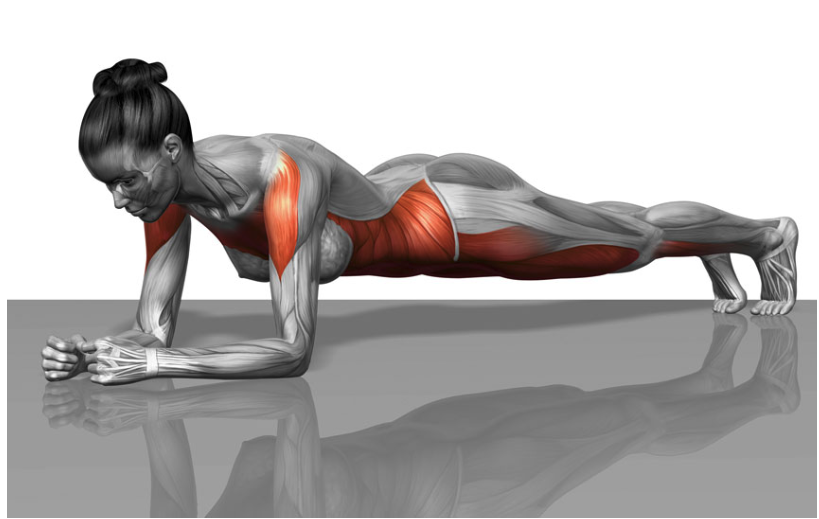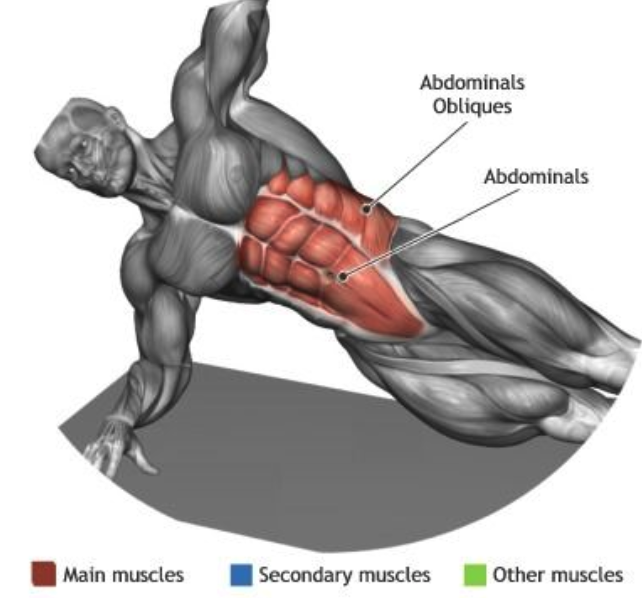Health and well-being: the importance of the abdominal core
This article is edited by Professor Diana Tomasi, Professor of Exercise and Sports Sciences, for over 30 years, at the Liceo G. B. Quadri in Vicenza and Head of the middle distance sector of Athletics Vicentina.
–
Today we will talk about the abdominal muscles and the importance they play for a balanced posture.
First of all, let’s remember what they are:
– Rectus abdominis: it is that of the famous “turtle” and runs from the upper edge of the pubis to insert itself at the top with three bundles in the fifth and seventh costal cartilage and in the xiphoid process of the sternum.
– Internal and external obliques: they come into play in the torsion and lateral inclinations of the torso. The interior is deeper and runs from the bottom up and from the outside to the inside. The exterior has a course from the outside to the inside but
instead it runs from top to bottom.
– Transverse: it is a large and deep muscle that starts from behind, inserting itself into the vertebrae and covering the anterior wall of the abdomen. It is a stabilizing muscle, and is also important in essential functions, such as breathing (exhalation), the expulsive thrusts of childbirth, or even simply in carrying out physiological functions.
Since the title talks about the abdominal core, we must remember that core stability (thanks to it stabilization of the body is achieved during the movements it performs) is also given by other muscle groups (extensors of the spine, buttocks, etc …). We recall with regard to core stability that Joseph Pilates was one of the first to use this term, arguing that a body is strong if its central part is stable. Finally, in general, we mainly recommend exercises to be performed in isometric contraction (therefore static, i.e. without lengthening or shortening of the muscles concerned), such as the following.
But coming to the exercises that can help us strengthen the abdominal core, I would say that the first to consider is the plank. The plank (see first image below) is an easy position to understand but not so easy to maintain for a long time if our physical shape is not optimal. As always, therefore, we must proceed step by step. On a mat or a carpet, from the lying position on your stomach, raise yourself resting only on the forearms and on the tips of your feet, forming a line as straight as possible with the body.
Maintain the position for thirty seconds, recover another thirty seconds to perform the first repetition. Four repeats form a series. Between one series and the next, allow yourself three minutes of recovery. Recommended serial number: 3.
If this type of execution is too demanding, the exercise can be facilitated by resting the knees on the ground, always taking care to contract the buttocks and abdomen.

Another exercise that is certainly useful for the oblique abdominal muscles is the side plank (see second image below). Also in this case we do 3 series of 4 repeats, then changing the execution side. As with the plank, if this type of execution is too demanding, the exercise can be facilitated by placing the knee closest to the floor on the ground, always taking care to contract the buttocks and abdomen to seek maximum body alignment.
 A third and final exercise, this time done with isotonic contractions, mainly concerns the rectus abdominis. Lying on your stomach, place your legs on a chair and lift (without forcing) your head and shoulders, bringing them towards your knees. For a correct execution, flex the head and orient the chin towards the jugular dimple. See the sequence below.
A third and final exercise, this time done with isotonic contractions, mainly concerns the rectus abdominis. Lying on your stomach, place your legs on a chair and lift (without forcing) your head and shoulders, bringing them towards your knees. For a correct execution, flex the head and orient the chin towards the jugular dimple. See the sequence below.
As always remember: don’t want to overdo it. Excessive exercise is not good, just as too much sedentary lifestyle is not good. Even on the diet front, excesses in one direction or another (binge eating or excessively low-calorie or nutritionally unbalanced diets) are never good. Adopt a varied diet, giving space for all the “colors” of the food to put on the table: and when you have little time or want the certainty of a nutritionally complete and balanced food, remember Bivo, the Italian “complete food”.
Speaking of Bivo, if you want to taste it, use the discount code “IORESTOINFORMA” to get 10% discount on your first purchase!
–
Source of the video: Youtube channel P4P Italia





